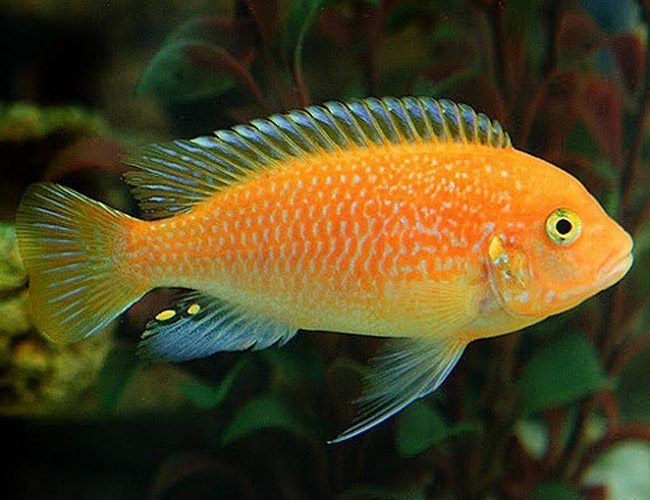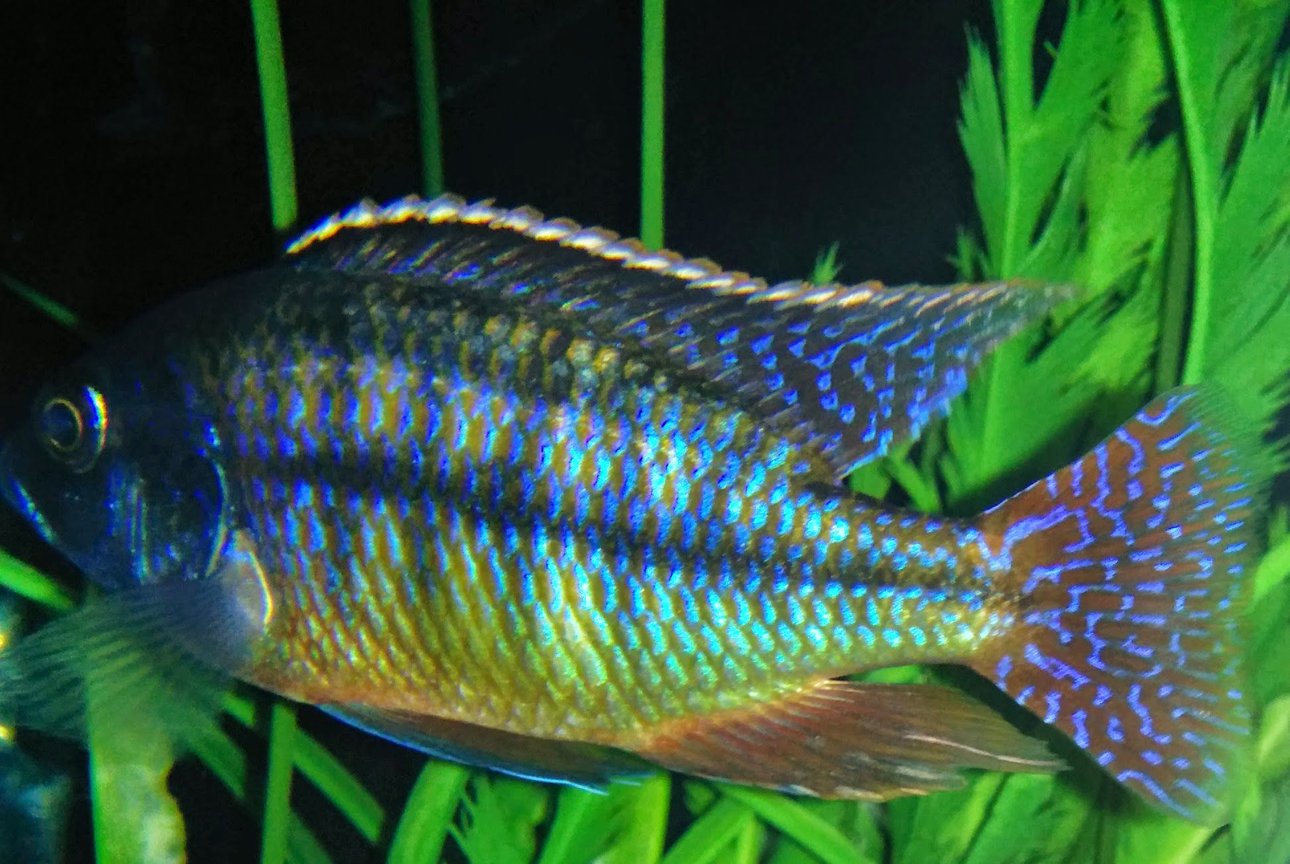
The question brings up a baffling problem that the scientific community has been working to resolve. "What's the deal with the 3 scientific names?" "Loose" aufwuchs can contain insect larvae, nymphs, crustaceans, snails, mites and zooplankton. Aufwuchs refers to tough stringy algae that is attached to rocks.
#Red zebra cichlid shaking free#
Like other Mbuna, they are commonly found near sediment free rocky areas where they feed on aufwuchs.

Common names are derived from their color patterns include the Cherry Red Zebra and the more recently developed Super Red Zebra. Other common names this fish is known by are Orange Zebra Cichlid, Esther Grant's Zebra, Orange-blue Mouth Breeder, Metriaclima estherae and Pseudotropheus estherae (both are invalid scientific names but still being used in the hobby), and of course Mbuna. Although it is endemic to Lake Malawi it has a very restricted range, found in only five locations, there are no major recognized threats at present. This species is listed on the IUCN Red List as Vulnerable (VU). Most are collected near the Minos Reef, but some are also collected near Meluluca, Mozambique. They are found in five locations including Minos reef, Chilucha reef, Metangula, Nkhungu, and Masinje. They are endemic to the rocky shorelines of Lake Malawi, Africa. The Red Zebra Maylandia estherae (previously Pseudotropheus estherae) was described by Konings in 1995.

To house one male and two to three females, a minimum sized 55 gallon tank with a length of 48" is suggested. A much larger tank will be needed to keep a tank of mixed Mbuna.

But a decor of rockwork that offers lots of nooks and crannies for hiding places is needed for success. This species easily adapts to prepared foods, is very easy to breed, and the juveniles are very easy to raise as well.įor the aquarists who is willing to do frequent water changes and provide appropriate tank mates, the Red Zebra is easy to care for. It is only a moderately aggressive cichlid compared to other Mbuna, but is still not a community tank specimen, It cannot be kept with fish other than cichlids. This is a great fish for both the intermediate and experienced cichlid keeper. Common names are derived from their color patterns and popular varieties include the Cherry Red Zebra and the more recently developed Super Red Zebra. Females can be yellow, orange, or orange with dark mottling. Males of a "red-red" strain can be a orange/red coloring with no vertical bars, and there is also an albino strain. These include males of a "red-blue" strain that are a light blue with faint vertical barring. There are many captive strains available. This resulted in orange males and a variety of other unusual color patterns. Most captive bred specimens available in the hobby were originally line bred for specific color traits in Florida fish farms. But today it has regained its status as one of the "most popular" African Cichlids. When first introduced to the hobby this was a very popular Mbuna, and then it fell out of favor a bit. Now however, the Red Zebra is considered valid as Maylandia estherae and is also called Esther Grant's Zebra. All the Zebra-type cichlids were moved to their own genera and both Maylandia estherae and Metriaclima estherae were recognized for this cichlid.

Recent revisions in the Pseudotropheus genus caused a new surge of identity crisis. Finally it was described as its own species, Pseudotropheus estherae, by Konings in 1995. It was known as the Orange Blue Mouth Breeder and described as Pseudotropheus spec. It was originally considered to be a variety of the Zebra Cichlid Pseudotropheus zebra. This cichlid has a history of ups and downs in both identity and popularity. This name aptly describes the environment these fish live in as opposed to being open water swimmers like the Utaka cichlids and other "haps". The name Mbuna comes from the Tonga people of Malawi and means "rockfish" or "rock-dwelling".
#Red zebra cichlid shaking full#
There are 13 genera full of very active and aggressive personalities of Mbuna cichlids. This is a zebra-type cichlid that belongs to a group called Mbunas. These are also one of only a handful of Mbuna species that produce blotched color mutations. In the wild adult males are light blue, while females can range between a brownish beige to an orange-red and lack the broad vertical barring. The coloring of both the male and the female is very appealing, almost looking like two separate species. The Red Zebra Maylandia estherae (previously Pseudotropheus estherae) is a very beautiful and desirable cichlid.


 0 kommentar(er)
0 kommentar(er)
